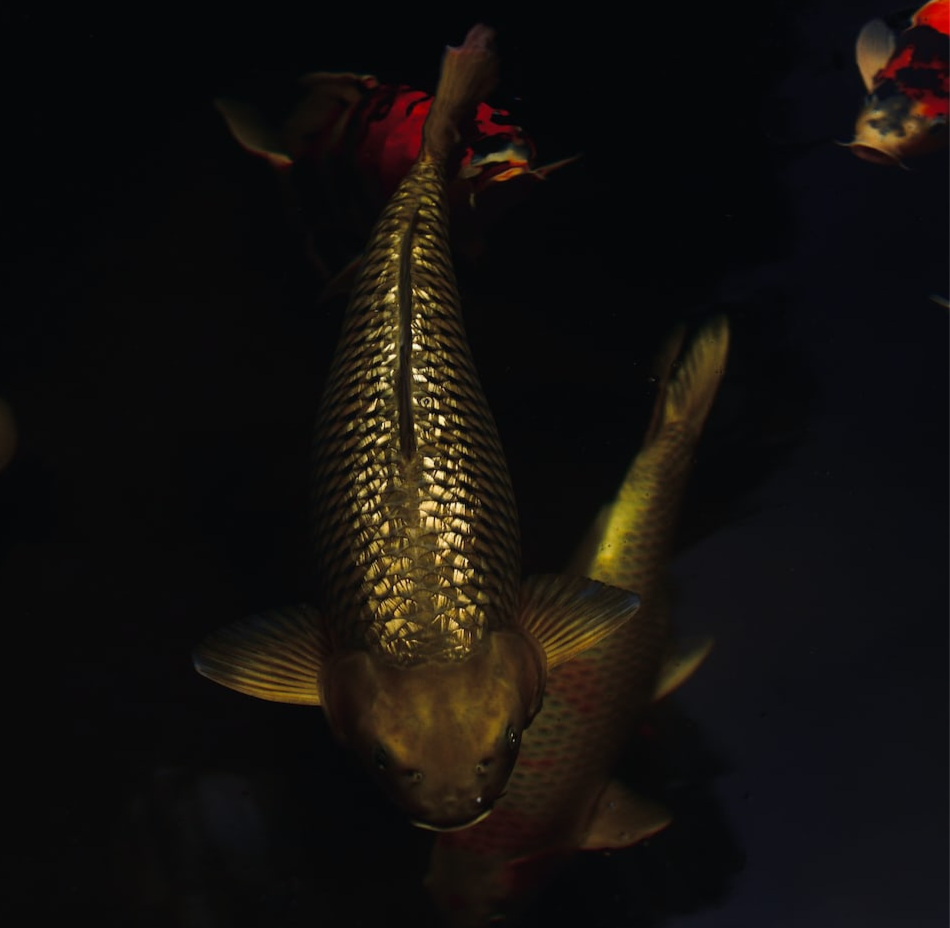What to Look for in Japanese Koi Food: A Guide to Ensuring Top Quality, Growth, and Health
- Xscapes

- Sep 4, 2024
- 4 min read

What to Look for in Japanese Koi Food: A Guide to Ensuring Top Quality, Growth, and Health
Feeding your koi fish the right diet is crucial for their growth, vibrant colors, and overall health. With so many options on the market, especially when it comes to Japanese koi food, it can be challenging to determine what’s best for your pond's prized inhabitants. This guide will help you understand what to look for in high-quality koi food, ensuring your fish thrive year-round.
High-Quality Protein Content
The first thing to check when selecting koi food is the protein content. Koi are omnivores, but they thrive on a diet that’s rich in high-quality protein. Look for food that lists fish meal or shrimp meal as the primary ingredient, as these are excellent sources of protein. Avoid foods that contain a lot of fillers like corn or wheat as the first ingredient, as they offer little nutritional value. "Fish-meal is the main ingredient in many koi foods as the main protein source. Therefore, the quality of fish meal is very critical." - Kodama Koi Farm
Key Points to Look For:
- Protein content of at least 35 -40%
- High-quality fish meal as the primary ingredient
- Avoidance of low-nutrition fillers
Essential Vitamins and Minerals
Koi need a balanced diet that includes essential vitamins and minerals for their immune system, bone health, and overall well-being. Look for food fortified with Vitamin C, Vitamin D, and a range of B vitamins. Additionally, calcium is important for bone development, while antioxidants like Vitamin E help maintain the vibrant colors that koi are known for.
Key Vitamins & Minerals:
- Vitamin C for immune support
- Vitamin D for bone health
- Vitamin E for skin and color vibrancy
- Calcium for skeletal development
Color-Enhancing Ingredients
One of the primary reasons koi enthusiasts choose Japanese koi food is for its color-enhancing properties. Ingredients like spirulina, krill, and astaxanthin are known for boosting the red, orange, and yellow hues in koi fish. If maintaining or enhancing your koi's coloration is a priority, look for these ingredients prominently listed on the packaging.
Color-Enhancing Ingredients:
- Spirulina
- Krill
- Astaxanthin
Growth-Promoting Formula
For koi breeders or those looking to grow their koi to larger sizes, it’s important to choose a food that’s formulated specifically for growth. This typically means higher protein levels and added growth stimulants like wheat germ. Wheat germ is easily digestible and promotes weight gain, especially in cooler water temperatures.
Growth-Enhancing Components:
- Higher protein levels (closer to 40%)
- Wheat germ for digestibility
- Specialized growth formulas

Seasonal Formulations:
Koi have different nutritional needs depending on the season. In colder months, they require food that is easier to digest since their metabolism slows down. Conversely, during warmer months, when their metabolism is more active, they need high-energy foods to support growth and activity. Look for season-specific formulas or consider adjusting their diet based on the time of year.
Seasonal Considerations:
- Cold weather: Wheat germ-based, easily digestible food
- Warm weather: High-energy, high-protein food
Floating vs. Sinking Food:
Whether your koi food floats or sinks can affect how your koi eat and how you observe their health. Floating food allows you to watch your koi eat, making it easier to monitor their behavior and catch any potential health issues early. Sinking food, on the other hand, can be beneficial for koi that are shy or lower in the feeding hierarchy, ensuring they get their share of food without competition.
Choosing the Right Type:
- Floating food for easy observation
- Sinking food for shy or less dominant koi
Trusted Brands and Quality Control:
When choosing Japanese koi food, it’s essential to go with brands that are well-regarded for their quality control and use of premium ingredients. Trusted brands often invest in research and development to create formulas that meet the specific needs of koi at different stages of life. Look for brands that are transparent about their ingredients and have a reputation for excellence in the koi community.
Top Brands to Consider:
- Hikari
- Saki-Hikari
- Dainichi
- Ogata
- Kodama Koi farm
_ Aquascape
Final Thoughts: Feeding Your Koi for Success:
Feeding your koi isn't just about filling their stomachs; it’s about providing them with the nutrition they need to grow, thrive, and showcase their natural beauty. By paying attention to the quality of protein, vitamins, color-enhancing ingredients, and seasonal needs, you can ensure your koi are receiving the best possible care. Remember, a healthy diet is one of the most important factors in maintaining a vibrant and lively koi pond. "Only feed your koi as much as they can eat in five minute sessions. Feed your koi three times a day: early morning, early afternoon, and late afternoon. Stick to this schedule to avoid overfeeding." - Koi Story
Sources:
Kodoma, Taro. "Koi Food Guide." Kodama Koi Farm, https://www.kodamakoifarm.com/
Koi Fish Feeding Tips and Recommendations. Koi Story, https://koistory.com/



Comments